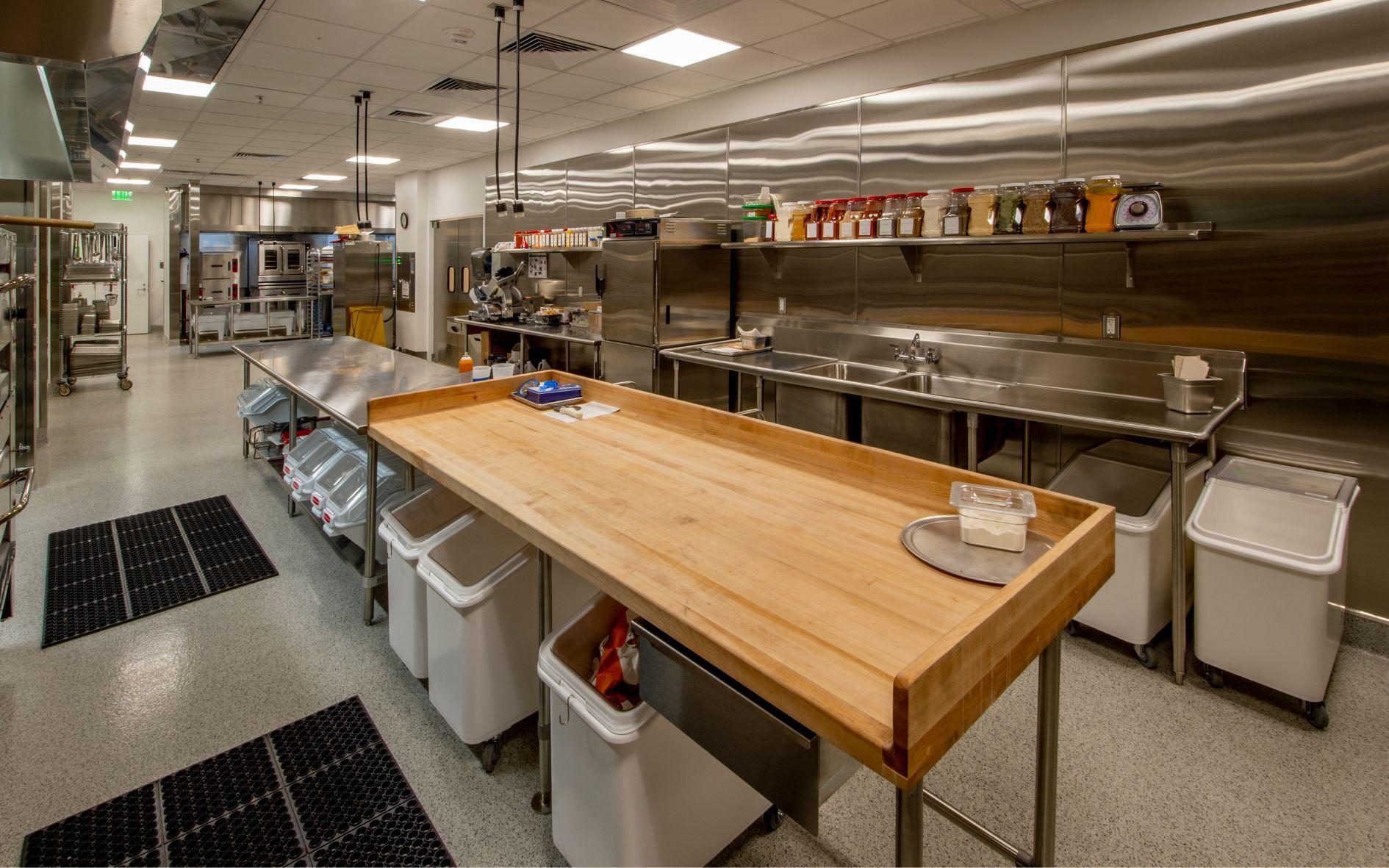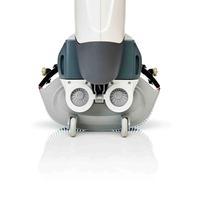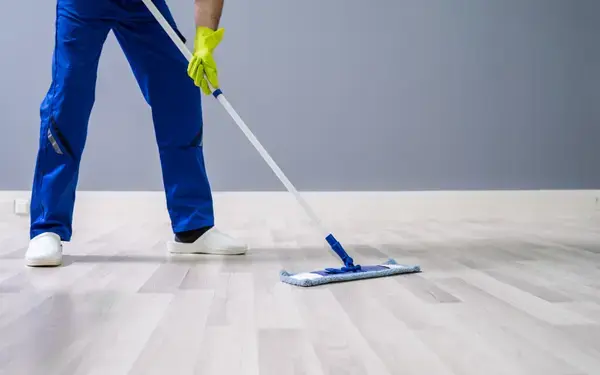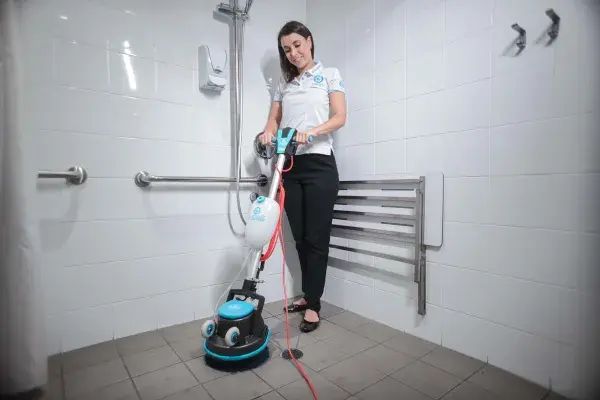You are reading: Choosing The Right Floor Mop For Your Commercial Kitchen
30 August 2022
7min read time
Brooke Payne
Choosing The Right Floor Mop For Your Commercial Kitchen
Share:

Key Insights
- Choosing the right industrial floor mop can be the difference between clean floors and unsafe and dirty ones
- The i-mop saves you water and dries almost instantly leaving your kitchen safe and clean
- It's light weight and maneuverable so it is easy to clean in all those hard to reach places
In the food production sector, effective cleaning is paramount. Your industrial kitchen cleaning equipment needs to be efficient, productive and, most importantly, easy to perform. Choosing the right industrial floor mop can be the difference between clean floors and unsafe and dirty ones.
Many food production companies use traditional mop and buckets, deck scrubs, and squeegees. This isn’t effective when it comes to cleaning up food scraps, soiling and oil, and makes work harder for staff.
Here are four questions you should ask when choosing the right industrial floor mop for your business.
Is it maneuverable?
When cleaning a commercial kitchen, it’s important you can get to all of those hard-to-reach areas. You should be able to clean right to the edge of your floor without anything getting in the way. The i-mop reaches right to the edge of floors and also cleans edges just as efficiently as it does the rest of the floor.
Whether you have multiple food production facilities, a large warehouse or even just a small area, your floor mop needs to be easy to transport and able to get into small nooks. The i-mop can do all of these things with ease.
Is it water-saving?
Commercial mop machines, and many types of floor scrubbers, often consume a great deal of water. For best hygiene practise when mopping, the water in the mop bucket should be changed at least every 150sqm of floor area. This uses around 8-10L of water per 150 sqm! For the sake of both the environment and your wallet, it’s important that you use an industrial floor mop that conserves water and is sustainable.
It’s also important to ensure that, for the safety of your floors, water is contained and dries quickly. Some floor scrubbers don’t deliver quick drying results due to poor vacuum and squeegee suction, and inferior squeegee rubber technology. The i-team’s i-mop utilises Airoflex squeegees to leave floors 40% drier, combined with up to 48% higher vacuum airspeed than comparable sized scrubbers to clean your floor and leave it dry within seconds.
Our i-mop is also a proud supporter of the Made Blue Program, which invests in the development of critical water infrastructure projects in developing countries. So not only is the i-mop inherently water-saving by saving up to 90% of water on traditional floor cleaning. Altogether, the i-mop has contributed over 25 million litres of clean water to places where it is needed most, with every i-mop sold contributing the equivalent of 18 litres of clean water per day to the Made Blue Foundation.
We care about more than just profit - we care about excellent products that make excellent results and have a positive impact on the world as a whole.
Is it effective or does it just push dirt around?
Many traditional mop-and-buckets merely push water and dirt around, instead of actually cleaning the floor. i-team’s commercial floor cleaning equipment ensures that floors are actually clean - rather than just looking clean or shiny. Regular mops only remove 30-40% of dirt while the i-mop removes a significant 97%. Often, in fact, if a floor is shiny and sticky, this might mean that there has been an overuse of chemicals on the hard floors.
The i-mop delivers clean floors with speed and efficiency. It’s the best way to clean floors, with quick cleaning for lowered cleaning costs, fast drying and allowing for cleaning with ease. The i-mop is an industrial floor mop, but with the power of an autoscrubber: it’s the floor scrubber dryer that every cleaning company needs.
With a brush speed of between 350 RPM and 500 RPM (up to 3 times the speed of comparable walk behind floor scrubbers), depending on whether you go for the Lite, XL or XXL and a brush pressure of between 13kg and 32kg, the i-mop will clean your floors with speed, accuracy and efficiency. With the i-mop, you’ll know your floors are clean without doubt. The i-mop also has a proven dirt removal rating of over 97%.
Read: Super Steve's cleaning team: cleaning smarter not harder.
Is it too awkward to transport or use?
Your floor mop needs to be easy to transport and able to get to hard-to-get-to places without difficulty. Most floor scrubber dryers and autoscrubbers can’t actually reach most areas and are too large and cumbersome to transport. This adds unnecessary time to cleaning, especially since you might need a vehicle to transport the mop.
In addition, your industrial kitchen cleaning equipment should be easy to use: the i-mop xl and xxl, for example, have a battery on the ledge and right side of the scrubbing deck. The batteries won’t fit on the incorrect side, and they also have a colour-coded clip and holder.
The only thing you really need to know when using an i-mop is how to use the black ‘Eco’ button, which reduces water usage by 40%.
According to Fine Food WA, the i-mop XL has eliminated manual floor scrubbing altogether and ensured that they can get the quickest and most efficient results every time. The i-mop is the best way to clean floors in the food industry.
Interested in getting an i-mop for yourself? Click here to find out more. If you want to see the i-mop in action, head over here to book a demo with our team
Common Questions Answered
1. What type of floor mop is best for greasy kitchen floors?
Answer: For commercial kitchens where grease buildup is common, a microfiber mop is often the best choice. Microfiber is highly absorbent and effective at picking up grease, oil, and food residue, without spreading it around. Paired with the right degreasing solution, it can handle the toughest kitchen environments.
2. Should I use a wet or dry mop for daily kitchen cleaning?
Answer: Both wet and dry mops have their place in a commercial kitchen. A dry mop is ideal for sweeping up crumbs and debris at the beginning or end of shifts. Wet mops, particularly those with microfiber heads, are essential for sanitizing and deep cleaning after spills or at the end of the day. Many kitchens use a combination of the two for optimal cleanliness.
3. How do I maintain hygiene with a commercial kitchen mop?
Answer: To maintain hygiene, regularly launder mop heads to remove bacteria and grease buildup. Choose mop heads that are machine washable and quick-drying. Replace worn-out mop heads frequently to avoid cross-contamination. Also, ensure that the mop bucket water is changed frequently during cleaning to avoid spreading bacteria.
References
CleanLink – Choosing the Best Mop for Kitchen Floors
URL: https://www.cleanlink.com/news/article/Choosing-the-Best-Mop-for-Kitchen-Floors--23429
Facility Cleaning Decisions – Best Practices for Mopping in Commercial Kitchens
URL: https://www.facilitycleaningdecisions.com/article/mopping-in-commercial-kitchens
The Janitorial Store – Tips for Maintaining Clean Kitchen Floors
URL: https://www.thejanitorialstore.com/articles/maintaining-clean-kitchen-floors
Products Featured Inside this Article
Media and Insights
Join the movement that's changing what clean means.
Be part of a cleaner world. Get a live demo at a time that suits you.
Book a Demo











